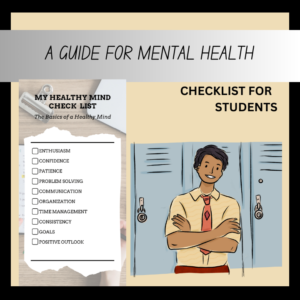This article explores the importance of recognizing student identity in the online classroom and provides strategies to celebrate diversity, enhance engagement, and personalize learning in virtual spaces.

In the online classroom, where physical presence is replaced by digital interactions, understanding and recognizing student identity becomes essential. Student identity encompasses a blend of cultural, personal, and academic characteristics that influence how learners engage with content and interact with their peers. By acknowledging these unique identities, educators can create a more inclusive and supportive virtual learning environment that fosters meaningful connections and improves student outcomes.
What is Meant by Student Identity?
Student Identity refers to the unique combination of beliefs, values, experiences, and characteristics that shape how a student perceives themselves within the learning environment. In this article we look at intrinsic and extrinsic factors that may affect students’ identity when it comes to their ability to learn in the online classroom.
This identity influences a student’s motivation, engagement, and approach to learning, encompassing factors such as cultural background, interests, strengths, academic self-concept, and social relationships. Recognizing and nurturing student identity can help educators create inclusive, supportive educational experiences that empower students to learn, grow, and feel valued in the classroom.
To help with student identity as it connects to mental health, we have put together a checkist for students we call: My Healthy Mind Checklist.

Visit our TpT store to get your copy of this infographic that benefits mental health by having teachers and students look at the important skills in education.
Connect With IXL
This blog contains affiliate links to highlighted websites and or resources. By clicking on the link and making a purchase we may earn a small commission at no extra cost to you. Click here for full disclosure.

Parents can leverage IXL worksheets to support their children’s learning at home by assigning targeted exercises aligned with their child’s grade level and curriculum, reinforcing key concepts in subjects like math and language arts.

The interactive nature of IXL allows parents to track their child’s progress, identify areas of improvement, and provide personalized assistance, fostering a collaborative and effective learning environment outside the classroom.
Click here to explore what IXL offers children when it comes to their learning.
Student Identity in the Online Classroom
Learning in the online environment is very different to the traditional classroom environment. There may be several factors that can affect how students feel in this classroom
When students go online, they are generally looking for enjoyment and not necessarily want to spend time learning.
However with the rise of applications that make learning online fun, such as;
LeapFrog LeapPad Academy Kids’ Learning Tablet, Green
students can start to see how to recognize their identity as their learn online.
Factors Affecting Student Learning in the Online Classroom
Two factors are known as extrinsic (external to a person) and intrinsic (inside a person).
Extrinsic factors include socioeconomic status and interactions with others, both of which may go against a person’s “identity” in the classroom.

Intrinsic factors include confidence and self-efficacy, both of which may impact on a person’s “identity” in the classroom.
Self efficacy: is a set of beliefs in one’s own behaviors and ability to perform well and achieved desired goals.
Building Student Identity
We will also look at identity and its connection to mental health.
What do we mean by student identity?
Student identity: is a set of beliefs, values, and commitments that an individual connects towards being a student.
This article provides ways for students can work alongside teachers, school administrators, and their parents to achieve the identities that bring them success in the online classroom.
How then can students establish their identities in order to help their abilities to learn in the online classroom?
Student Identity in the Online Classroom (Video)
Watch our video to see how students can establish (or claim) an identity that will improve their communication with their teacher and better their learning experience in the online class.
Socioeconomic status in education still remains a relevant issue affecting student identity in today’s classrooms around the world.
The reliance on the Internet for educational purposes has furthered the divide between students who could ‘easily’ afford to make the transition to online learning verses those who could not.
How then has this new and increased reliance on the Internet impacted on student identity?
Types of Student Identity
The definition of identity can be perceived as two different identities, assigned identity, that which is given to one by others, and claimed identity, that in which one acknowledges, or claims for oneself.
Research has helped with formulating an understanding as to the new identities students are expected to take on in the virtual classroom.
How then do we expect students to claim their identity in this new ‘digital’ age of ‘virtual’ learning?

Socioeconomic Status and Student Identity
In the ‘normal’ classroom, socioeconomic status divide may be evident in material belongings or lack thereof.
However, school administrations and teachers established policies and procedures as to allow all students, regardless of their socioeconomic status, with the same opportunities to learn in the classroom.
Breakfast and lunch programs at schools provided ‘underprivileged’ students with means to come prepared to learn. Healthy bodies make for healthy minds. Healthy minds help establish one’s identity.
In the school year of 2020, it may have become more clear to the students themselves, which identity category they felt they belonged to given how easily they could adapt to the new online learning environment.
How then has this new learning environment affected the identity of students?
Mental health research of students in changing classroom dynamics has seen growing interest in helping students at any stage in their learning recognize their identity.
It is therefore worth looking into the phenomenon surrounding mental health and student identity in the online classroom.
Student Identity and Mental Health
Mental Health, as defined by the World Health Organization (WHO), is a state of well-being in which individuals successfully cope with the normal stresses of life, enabling them to contribute productively to their community.
Schools around the world were forced to define or redefine their policies and procedures around online learning in large part due to the COVID-19 pandemic of 2020.

School administrations also looked at the effects of rapidly changing policies and its effect on the mental health of both teachers and students.
It goes without saying that students who experience high levels of stress can dramatically affect their learning in the classroom.
In looking to rationalize the research behind the reasons for students struggling with online learning, the concept of mental health became an emerging field of interest.
Challenges to Student Identity
Students may find many challenges with learning online. We discuss these challenges, and ways students can work with their families, teachers, friends, and schools to make online learning easier; helping them to claim their own individual identities.
I. Family Finances
Students may find it frustrating that their family may not be able to provide the necessary means needed for online learning.
Solution: School Support Services
Students can move past their frustration by discussing the situation with their family and letting the school help with providing the necessary means to facilitate online learning.
II. Participation in Class
Students may find it difficult to express their thoughts and feelings about learning in the online environment with their teachers, which may prevent them from participating, hindering their identities.
Solution: Teacher Support
In reaching out to their teachers and sharing their thoughts, students may be surprised at just how helpful teachers can be in offering the emotional and learning support as they need. After all, teachers can relate to what it feels like to be in the online classroom.
III. Using EdTech Tools
Students may find it frustrating and isolating having to navigate learning while trouble shooting any technical errors they may have during class.
Solution: Support from Classmates
Helping fellow classmates, who may not be used to working with online learning platforms, solve their technical issues (by sending them instructions through chat messages) offers benefits all, including building identities.
IV. Using Their Learning Styles in the Online Classroom
Students who are tactile learners may find it hard to learn to adjust to this new style of learning when they find the lessons don’t allow for physically engaging activities.
Solution: Support for their Learning Style at Home
Along with teacher support, families can provide the physical materials necessary for the student to engage in the lesson at home using materials the teacher uses to help explain the lesson.
All of these challenges may be a source of stress for the student, whereby impacting on their mental health. Therefore, EduKitchen also provides strategies that may help with learning in the online classroom.
One Community to Support Student Identity
When students feel that they are all provided the same opportunities by their teachers then this may allow for students become more active members in the online classroom.
School administration and teachers worked hard over the 2020 school to ensure all students had means to learn electronically by providing ‘underprivileged’ families with donated electronic devices.

When administration recognizes and acknowledges the benefits to mental health and identity by allowing flexibility in the classroom, students reap the rewards through knowledge that their teachers pass on to them.
By working together, school administration, teachers, and parents can then work to allow for healthy students, with healthy minds, who believe in themselves enough to be able to form their own identities now, and in the future.
Related Topics
Check out our other articles related to mental health in education.
- Six Summer Time Activities At Home Kids Will Love
- 5 Ways to Improve Physical Health in Kids At Home
- The Influence of Parents on Education Policy
- How Laughter Makes Learning Fun and Effective for Kids
- Helping Parents Understand Online Learning Platforms
- How IXL helps the Homeschool Curriculum
- How Apps like the Crayola Create and Play Help Kids
Join Our Newsletter Community Today!

Final Thoughts…
With the right mindset and general approaches to learning, students can learn to look past the platform and instead focus on how to establish their style of learning.
The right approach to learning means finding what works best for you as a student. Why not look at learning in a new way – one that works both inside and outside the classroom.
Sign up to join our email list where we provide newsletters that share our latest educational blog posts on important educational topics, as well as educational strategies, videos and services to help teachers, parents, and students with academic success.
Share Your Thoughts
Note: Our suggestions are meant to be a means of support as to how students can cope with learning in the online classroom. We recommend students stay in constant communication with their parents, teachers, and school administration for all the up-to-date changes to their school policies involving the online classroom.
Leave us a comment below and share your thoughts on this article and our suggestions for recognizing student identity in the online classroom.



